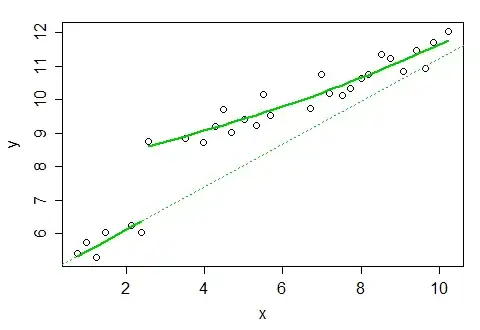Sample from a Pareto distribution. If $Y\sim\mathsf{Exp}(\mathrm{rate}=\lambda),$ then $X = x_m\exp(Y)$ has a Pareto distribution with density function $f_X(x) = \frac{\lambda x_m^\lambda}{x^{\lambda+1}}$
and CDF $F_X(x) = 1-\left(\frac{x_m}{x}\right)^\lambda,$
for $x\ge x_m > 0.$ The minimum value $x_m > 0$ is necessary
for the integral of the density to exist.
Consider the random sample y of $n = 1000$ observations
from $\mathsf{Exp}(\mathrm{rate}=\lambda=5)$ along with
the Pareto sample y resulting from the transformation above.
set.seed(1128)
x.m = 1; lam = 5
y = rexp(1000, lam)
summary(y)
Min. 1st Qu. Median Mean 3rd Qu. Max.
0.0001314 0.0519039 0.1298572 0.1946130 0.2743406 1.9046195
x = x.m*exp(y)
summary(x)
Min. 1st Qu. Median Mean 3rd Qu. Max.
1.000 1.053 1.139 1.245 1.316 6.717
Below is the empirical CDF (ECDF) of Pareto sample x along
with the CDF (dotted orange) of the distribution from which it was sampled. Tick marks along the horizontal axis show individual
values of x.
plot(ecdf(x), main="ECDF of Pareto Sample")
curve(1 - (x.m/x)^lam, add=T, 1, 4,
lwd=3, col="orange", lty="dotted")
rug(x)

Ref: See the Wikipedia page on Pareto distributions, under the heading for relationship to exponential.
